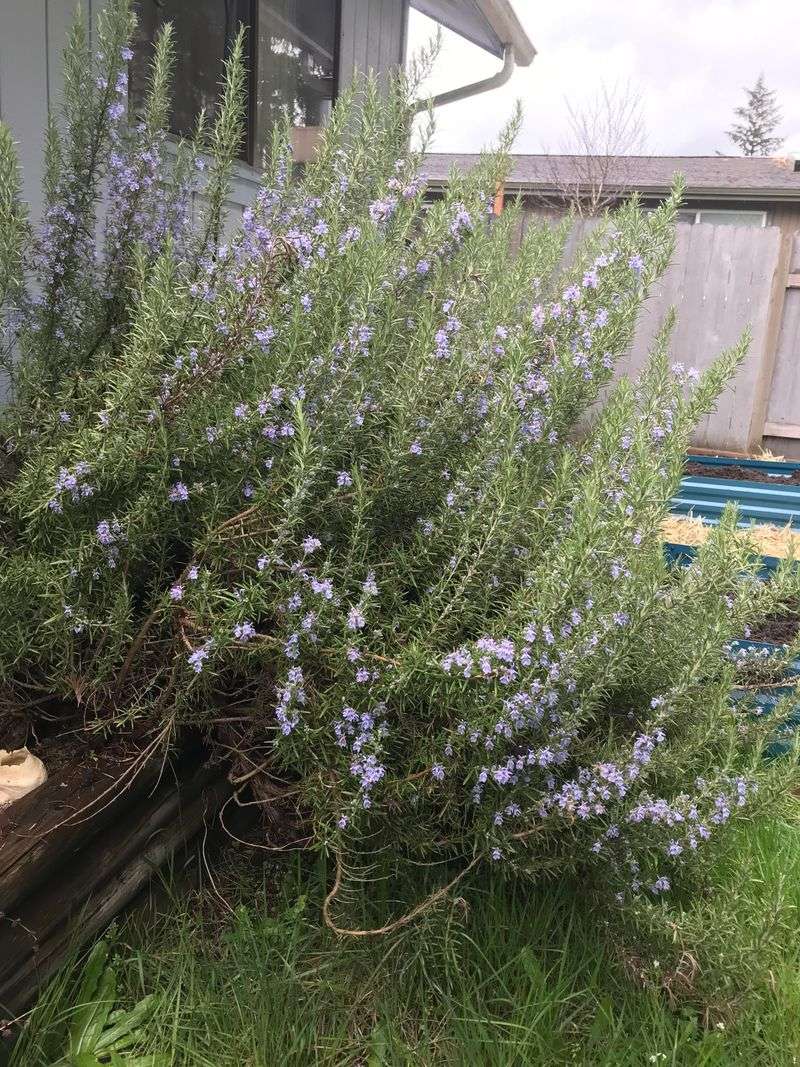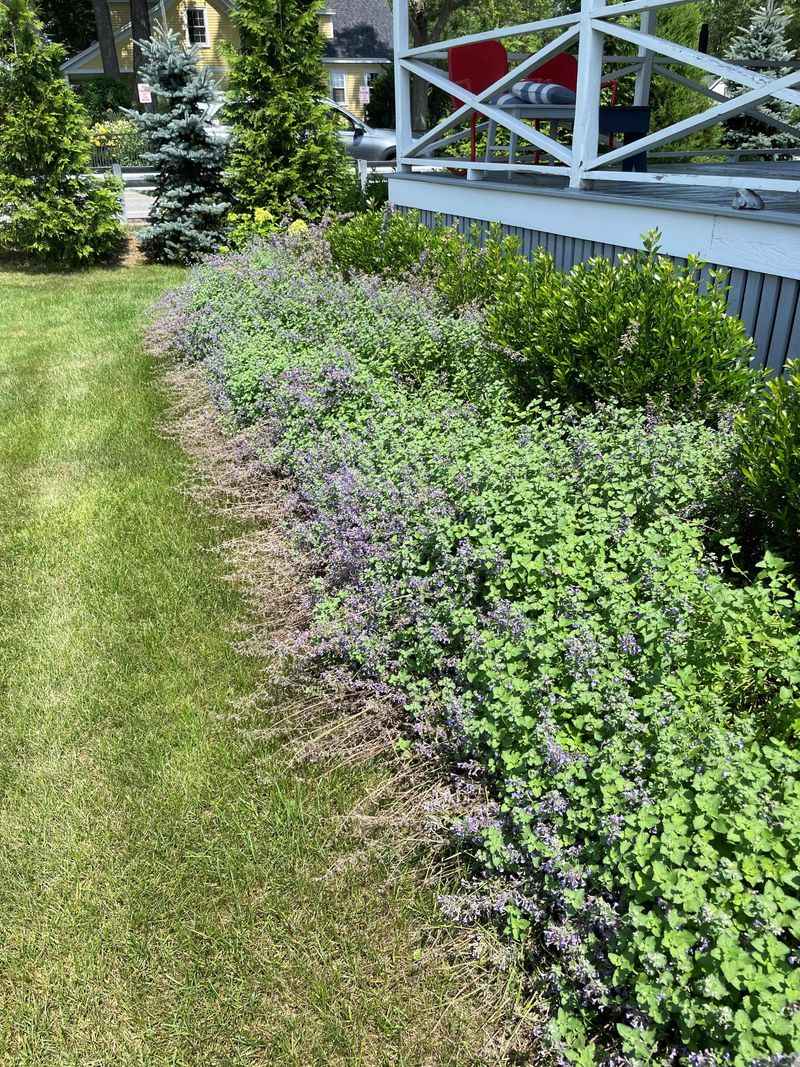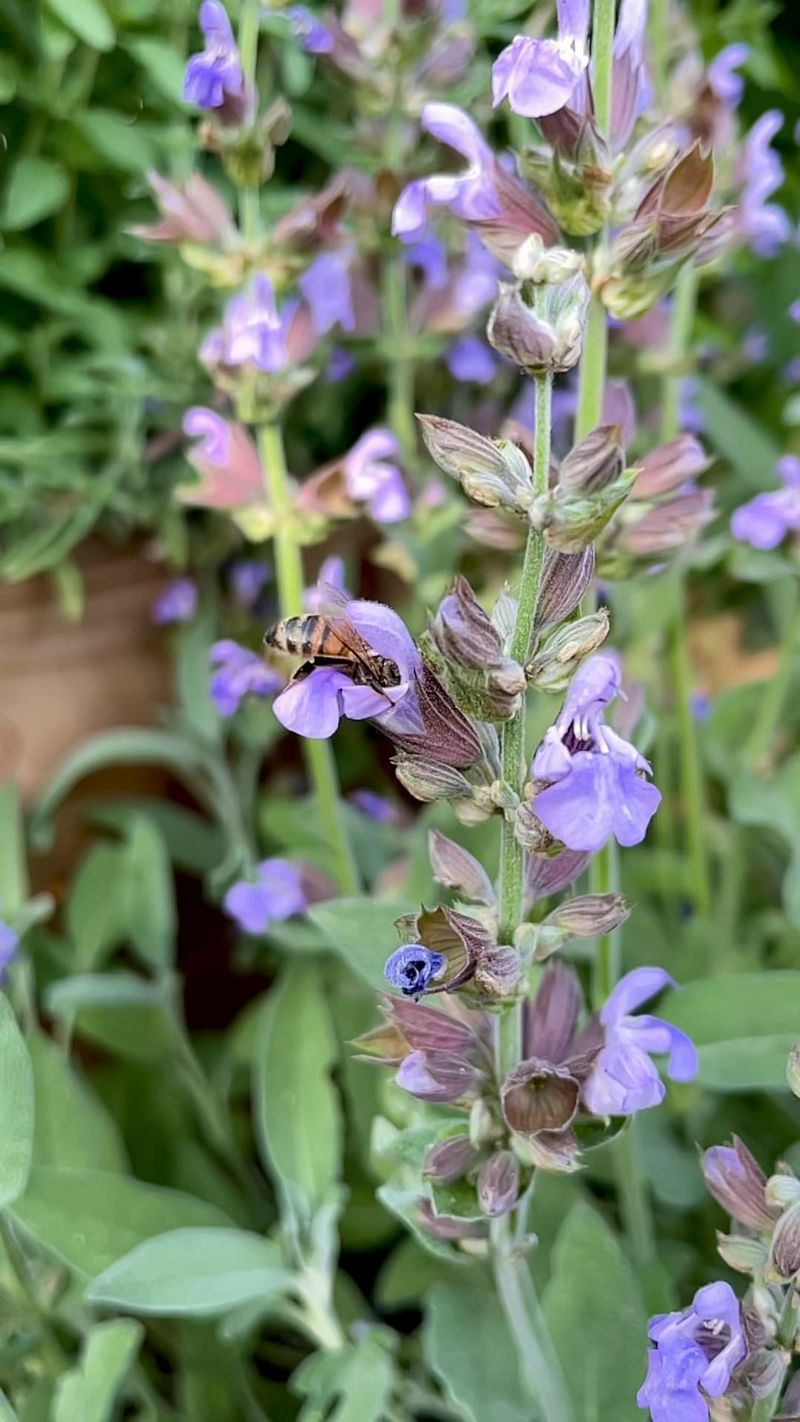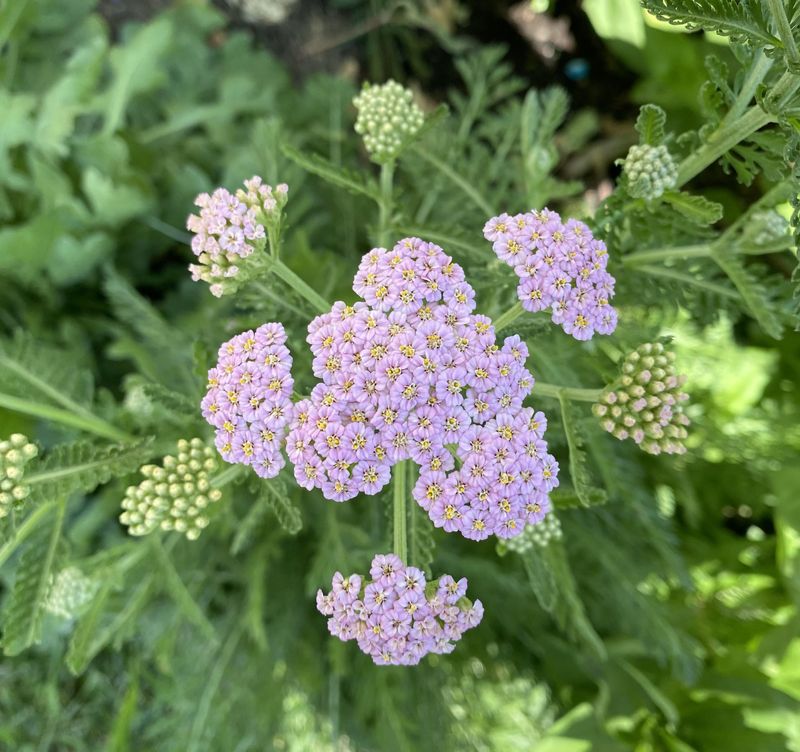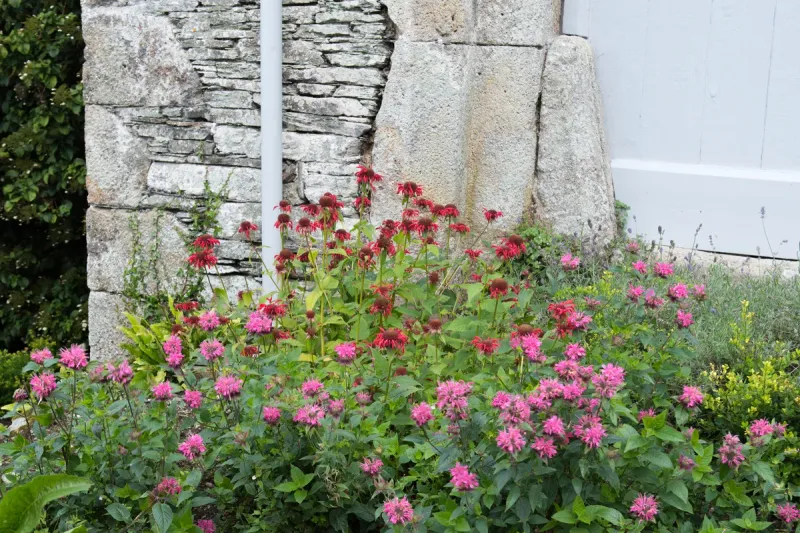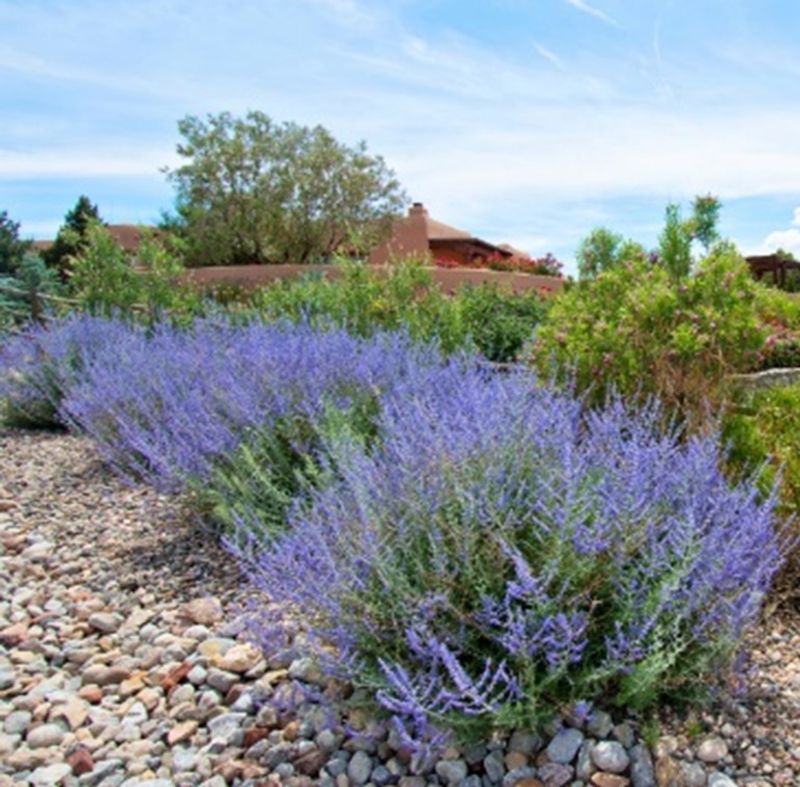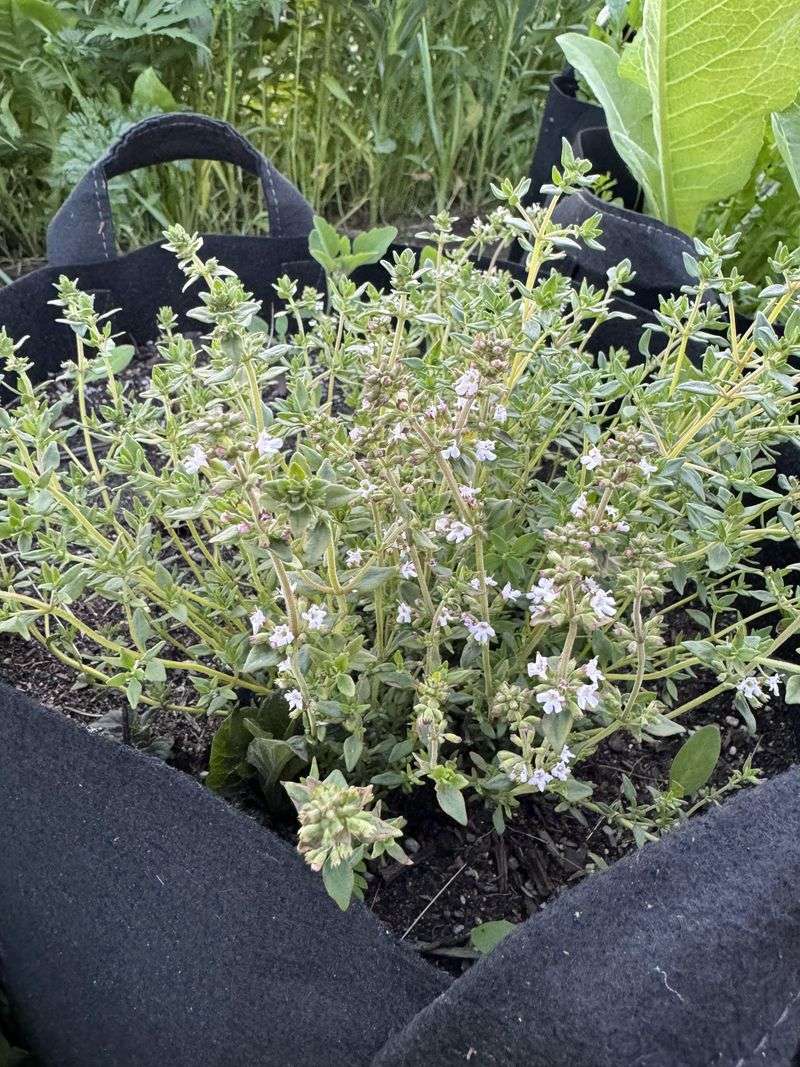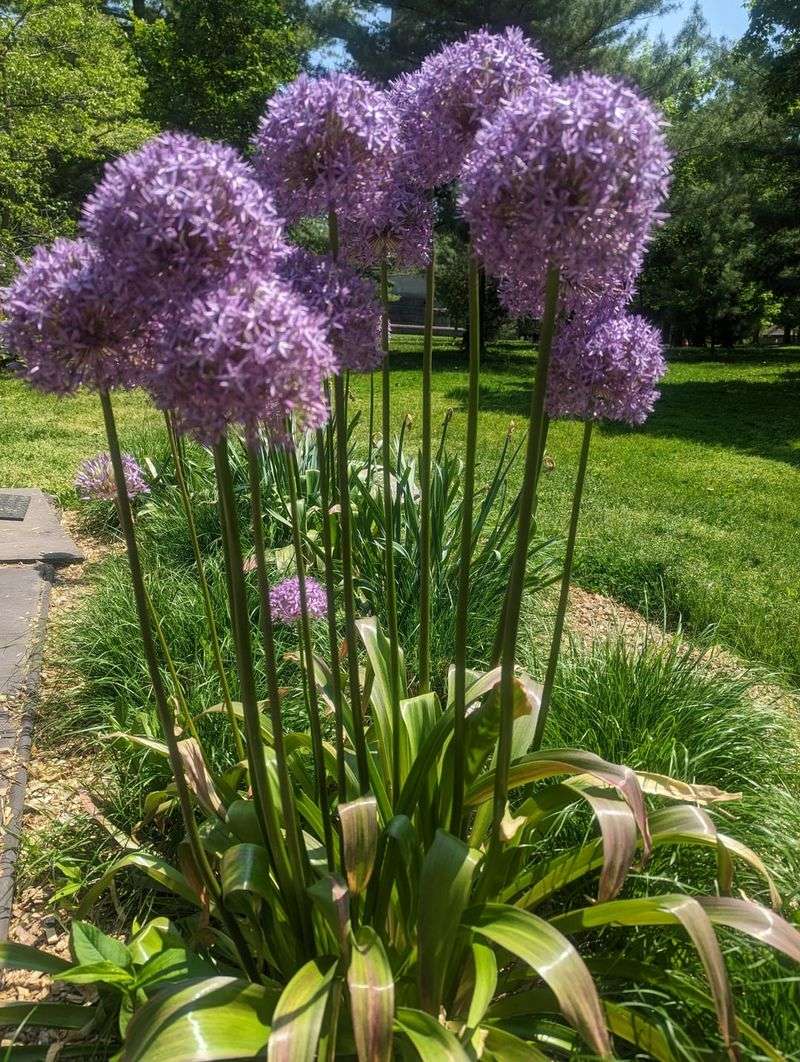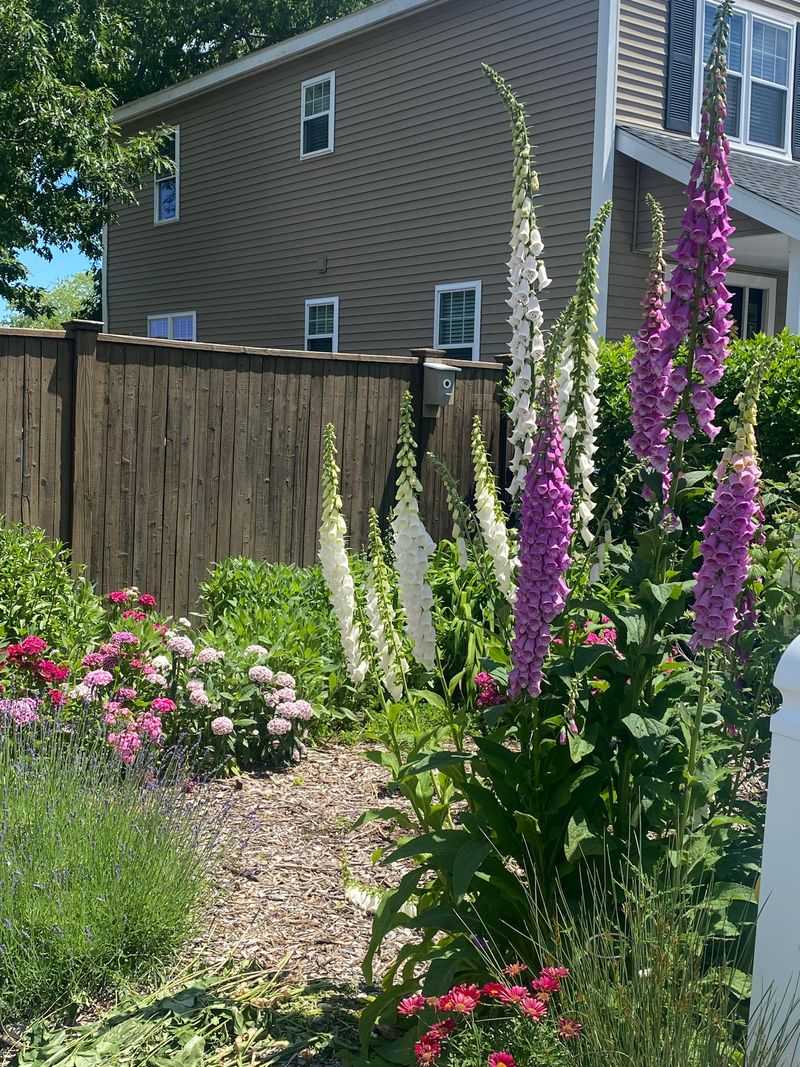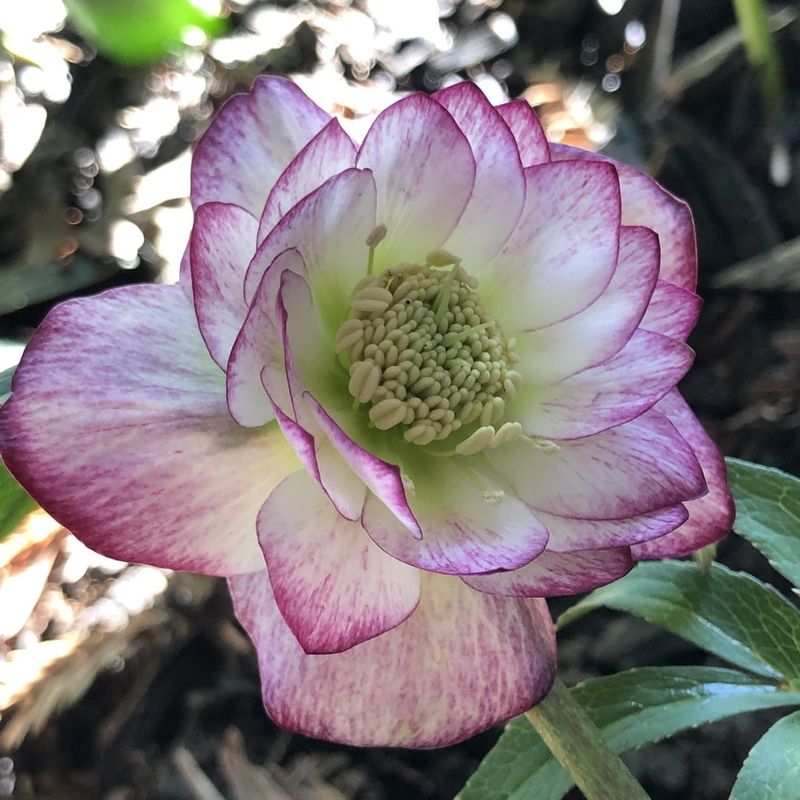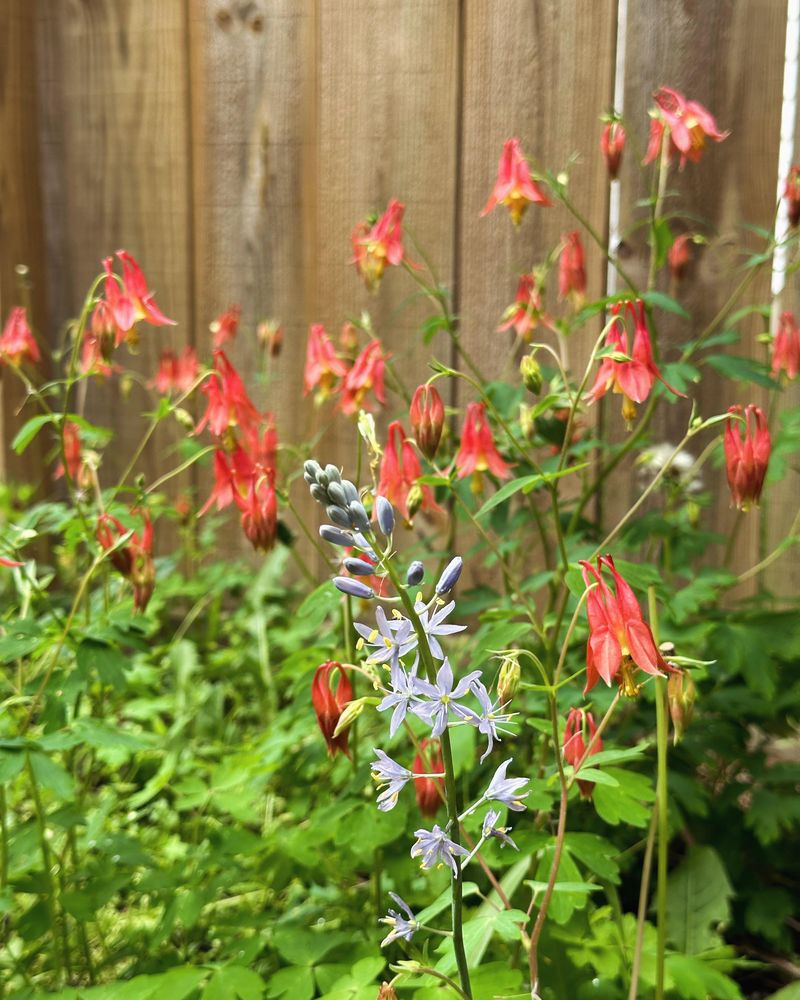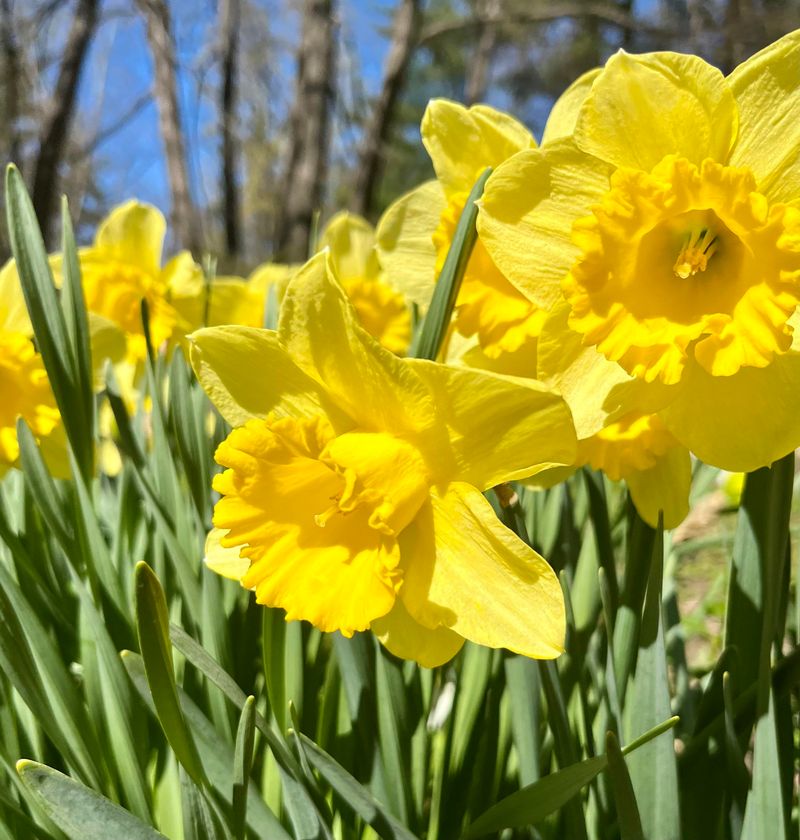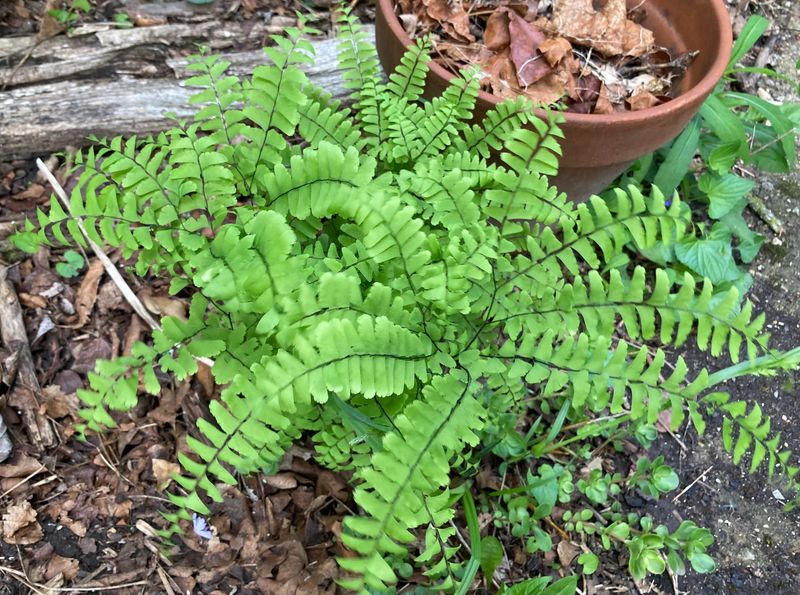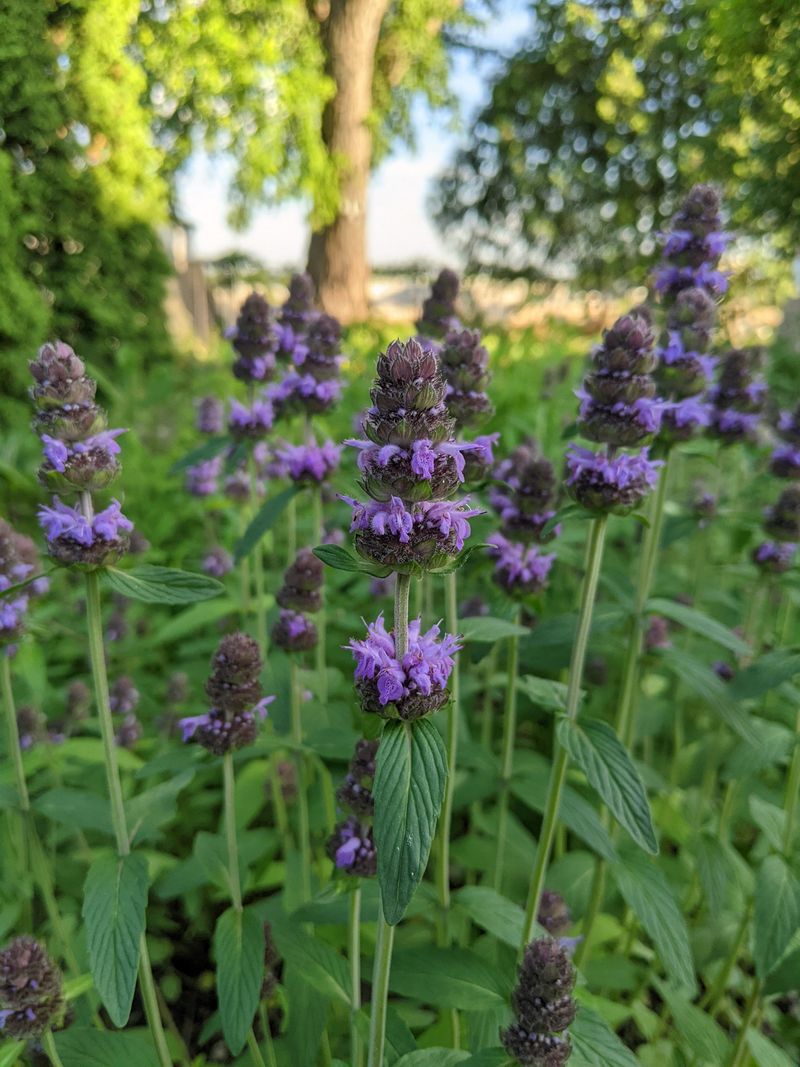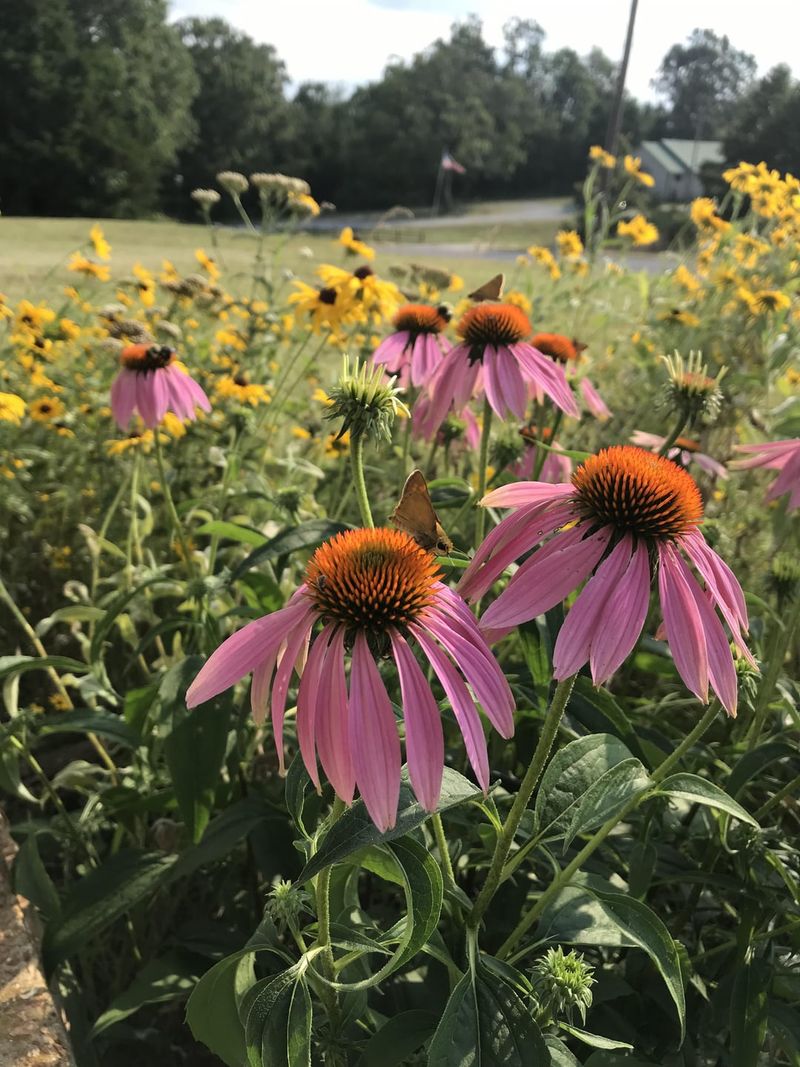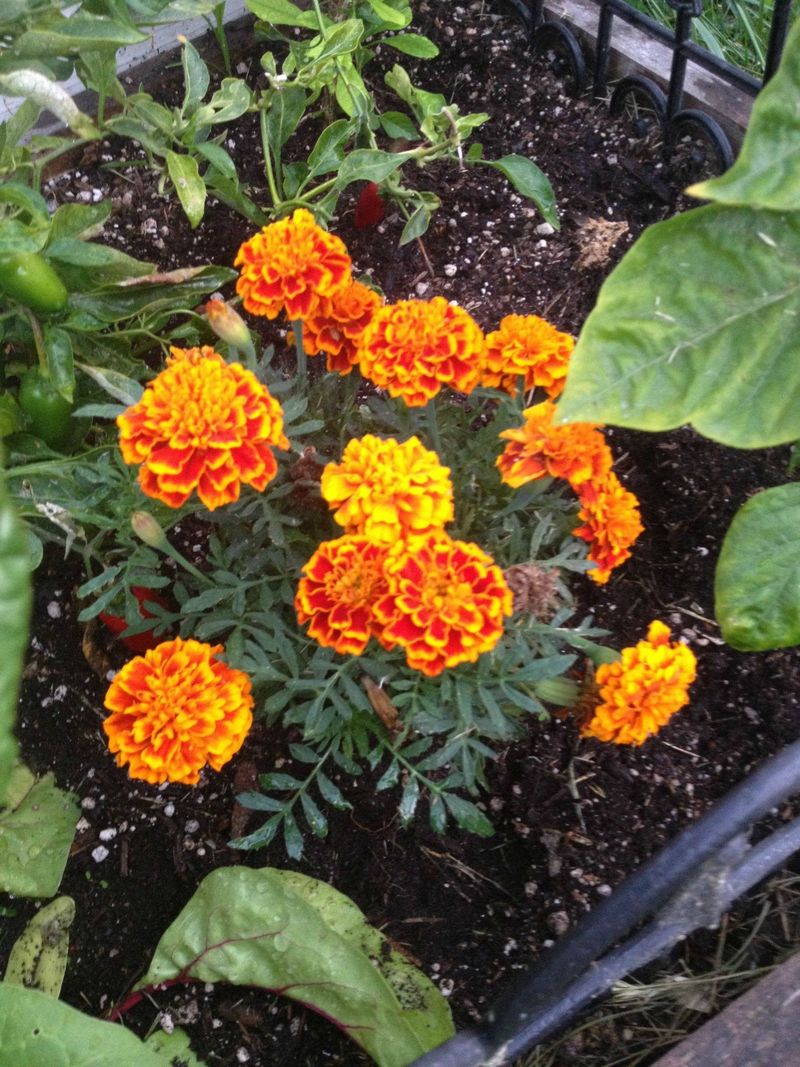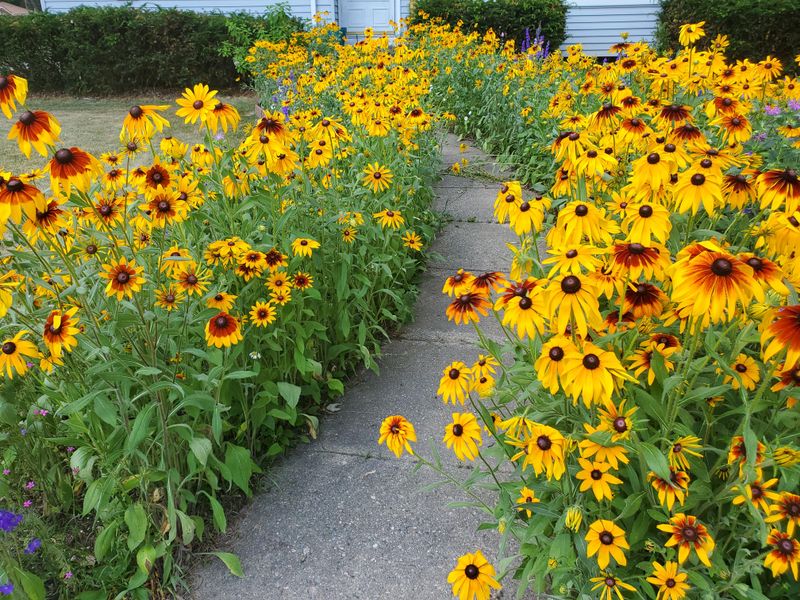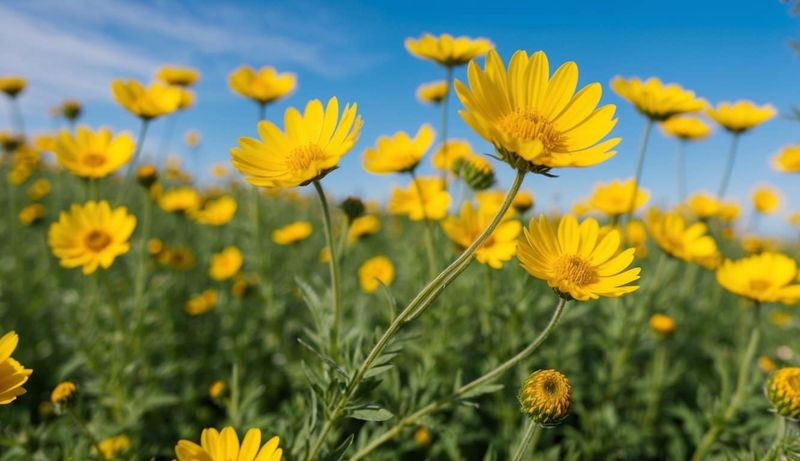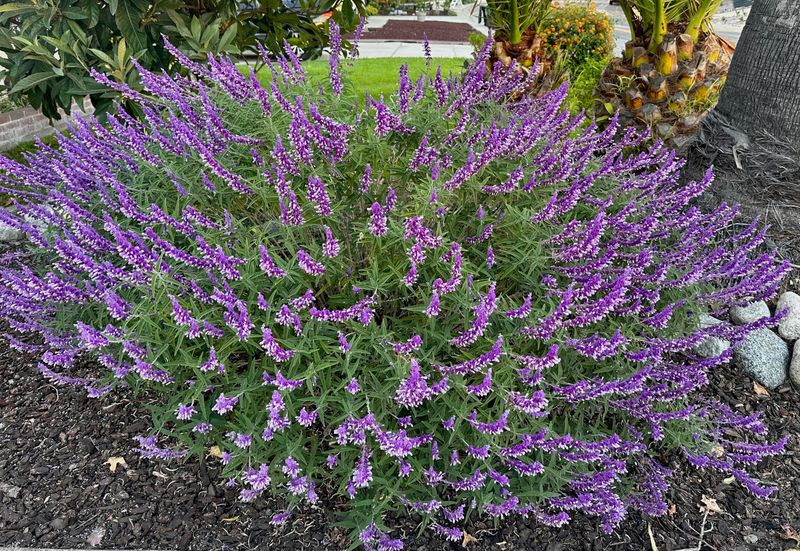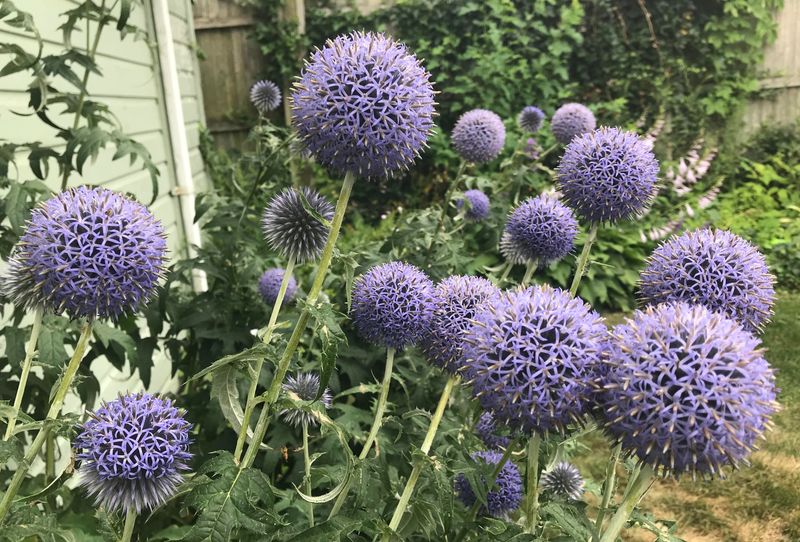In the vibrant world of gardening, perennials offer a steadfast beauty and reliability that other plants often fail to deliver. Yet, not all perennials are universally adored—at least not by the creatures that roam our gardens. Animals, in their search for a tasty snack, tend to steer clear of certain plants. This intriguing behavior isn’t just about taste; it involves a symphony of scents, textures, and sometimes even historical relationships between flora and fauna. Join me as we delve into the fascinating reasons why these 25 perennials are given a wide berth by the animal kingdom.
1. Lavender
Lavender’s enchanting aroma, adored by humans, acts as a natural deterrent for many animals. Its strong scent overwhelms the sensitive noses of deer and rabbits, keeping them at bay.
This perennial’s gray-green foliage and striking purple blooms make it a delightful addition to any garden, providing both beauty and practicality.
Historically, lavender has been used in sachets and oils, underlining its multifaceted appeal. Whether lining a pathway or filling a garden bed, lavender offers a sensory experience that’s both calming to us and off-putting to our animal visitors.
2. Rosemary
With its pungent, piney fragrance, rosemary is more than just a culinary delight. This hardy perennial is often planted to deter hungry deer and rabbits, who find its intense scent unappealing.
Rosemary’s needle-like foliage and resilience in dry conditions make it a versatile plant in borders and pots alike. Its historic roots as a symbol of remembrance only add to its charm.
As you brush past its dense greenery, the aromatic oils released create a sensory shield, safeguarding your garden’s more vulnerable inhabitants from unwanted nibbling.
3. Catmint
Catmint, a close relative to catnip, offers a delightful fragrance and a profusion of lavender-blue flowers. While cats may be drawn to its charms, deer and rabbits decidedly are not.
The plant’s aromatic oils and fuzzy leaves create an uninviting texture and smell, serving as a natural barrier. Catmint’s low-maintenance nature and long blooming season make it a garden staple, attracting pollinators while repelling bigger pests.
Its historical use in teas and as a medicinal herb highlights its enduring allure and unappreciated use by those outside the animal kingdom.
4. Sage
With its earthy aroma and fuzzy leaves, sage acts as a natural deterrent to browsing animals. This perennial herb, often associated with culinary pursuits, doubles as a protective garden companion.
Its robust scent and slightly bitter taste are unappealing to deer and rabbits, making it an excellent choice for garden borders. Sage’s historical significance spans cultures, revered for its medicinal properties and spiritual symbolism.
This plant adds depth not only to your dishes but also to your garden, offering a sensory feast that keeps unwanted visitors at a distance.
5. Yarrow
Yarrow stands tall with its feathery foliage and clusters of tiny flowers, creating a garden tapestry that’s both beautiful and functional. This perennial’s strong, peppery aroma is often enough to deter most herbivorous wildlife.
Yarrow adds not only aesthetic appeal but also a touch of ancient wisdom to your garden. The plant’s ability to thrive in poor soil conditions makes it an adaptable choice for tough gardening spots. While animals might avoid it, yarrow’s vibrant presence remains a gardener’s delight.
6. Bee Balm
With its striking tubular flowers, Bee Balm attracts pollinators like bees and hummingbirds while keeping other animals at bay. Its minty aroma and slightly bitter foliage aren’t favored by deer and rabbits, making it a colorful guardian of your garden.
This perennial’s bold hues add a splash of color, delighting both the eyes and beneficial insects. Known for its use in traditional herbal remedies, bee balm resonates with historical significance. Its dynamic presence ensures that while animals steer clear, your garden buzzes with life and color.
7. Russian Sage
This aromatic perennial is often overlooked by browsing animals due to its strong scent and slightly bitter taste. The plant’s drought resistance and long blooming season make it a resilient choice for any garden.
Originally native to central Asia, Russian Sage’s exotic allure is matched by its practical benefits. While deer and rabbits may pass it by, its vibrant display remains a striking feature from summer into fall.
8. Thyme
This perennial herb’s aroma is off-putting to deer and rabbits, who prefer to graze elsewhere. Thyme’s creeping growth habit makes it perfect for ground cover, filling spaces with its delightful fragrance.
This plant’s historical use spans from the kitchen to traditional medicine, underscoring its versatility. Whether in rock gardens or herb beds, thyme’s presence is both a feast for the senses and a shield against unwelcome garden guests.
9. Allium
Allium, with its dramatic spherical blooms, creates a striking architectural feature in any garden. Its strong onion-like scent is a natural repellent for deer and rabbits, keeping them at a distance.
This perennial’s bold presence starts in spring and extends through summer, offering both visual and protective benefits.
allium has been appreciated throughout the past not only for its ornamental value but also for its culinary uses. Its towering flower stalks and unique aroma ensure that while animals steer clear, your garden remains a visually captivating sanctuary.
10. Peony
These perennials are beloved for their extravagant flowers and sweet scent, which animals tend to avoid. Peonies’ glossy green foliage remains attractive long after the flowers have faded, providing seasonal interest.
Peonies have been symbols of prosperity and romance, adding an air of elegance to gardens. Their long lifespan and stunning appearance ensure they remain a perennial favorite, creating a garden backdrop that’s as enticing to humans as it is off-putting to unwelcome animal visitors.
11. Foxglove
Foxglove stands as a sentinel in the garden, its tall spikes of tubular flowers a feast for the eyes, yet a deterrent for many animals. This plant’s toxicity makes it unappealing to deer and rabbits, who instinctively avoid its bitter leaves.
The visual impact of foxglove is undeniable, creating vertical interest and a touch of whimsy. Its presence in the garden is both practical and enchanting. While animals may give it a wide berth, foxglove’s stunning blooms add a touch of magic to any outdoor space.
12. Hellebore
Hellebores, often blooming in the chill of late winter, offer a touch of color when most other flowers are dormant. Their leathery leaves and nodding blooms are unpalatable to deer and rabbits, making them a reliable choice for shaded areas.
These perennials have a mysterious allure, with historical ties to ancient medicine and folklore. Their ability to thrive in low light and poor soil conditions adds to their appeal.
13. Lamb’s Ear
Soft foliage and low-growing habit of Lamb’s Ear create a lush ground cover that deer and rabbits typically bypass. This perennial’s unique texture and appearance add a whimsical touch to gardens, making it a favorite among children.
Lamb’s ear was used as a natural bandage in the past, highlighting its multifaceted utility. In the garden, it is both decorative and practical, ensuring a sensory feast for humans while deterring animal visitors.
14. Columbine
Columbine, with its delicate, nodding blooms, offers a fairy-tale charm to shaded gardens. The plant’s unique flower shape and sweet nectar attract hummingbirds and bees, but its taste deters deer and rabbits. This perennial’s ability to self-seed and adapt to various environments makes it a versatile choice for gardeners.
Columbine has been associated with love and wisdom, adding a layer of symbolism to its beauty. While animals avoid its bitter leaves, columbine’s ethereal presence continues to captivate those who wander through the garden.
15. Daffodil
These perennials are toxic to deer and rabbits, who wisely avoid their bright flowers and bulbs. Daffodils’ ability to naturalize, spreading year after year, makes them a reliable choice for gardeners seeking low-maintenance beauty.
Their vibrant presence ensures that while animals steer clear, gardens come alive with the spirit of a new season.
16. Ferns
With their feathery fronds and lush green appearance, ferns create a tranquil oasis in shaded garden spaces.
While their ornamental appeal is undeniable, ferns’ texture and taste deter deer and rabbits, making them a reliable choice for woodland gardens. These ancient plants have a storied history, with ties to folklore and traditional medicine.
Their ability to thrive in low-light conditions without much fuss makes them a gardener’s ally.
17. Mint
Mint’s invigorating aroma and rapid growth make it both a culinary favorite and a garden protector. Its strong scent and overwhelming flavor are unappealing to deer and rabbits, who prefer to graze elsewhere.
This perennial’s versatile nature allows it to flourish in containers, herb gardens, and borders, filling spaces with its refreshing fragrance.
18. Echinacea
Known for its striking daisy-like flowers, Echinacea is a pollinator magnet that repels deer and rabbits. Its spiky flower centers and strong scent are unappealing to grazing animals, making it an excellent choice for garden borders.
Echinacea’s long blooming season ensures continuous color, attracting bees and butterflies while deterring larger visitors.
19. Marigold
Marigolds, with their bright, cheerful blooms, are a gardener’s ally in repelling unwanted animal guests. Their strong scent and slightly bitter taste deter deer and rabbits, making them a staple in garden borders.
These perennials are easy to grow, offering vibrant color and pest resistance with minimal effort.
Marigolds bring bright, cheerful color to the garden—and their scent helps keep curious animals at bay, offering beauty and a bit of built-in protection.
20. Rudbeckia
If you aren’t familiar with Rudbeckia, maybe black-eyed susan rings a bell. This plant offers a bold splash of color with its sunny yellow petals and dark centers.
Its rough texture and slightly bitter taste deter deer and rabbits, ensuring it remains undisturbed. Rudbeckia can handle just about any soil you give it, which makes it a solid pick for low-fuss gardens.
It has that wild, native look that brings a little untamed charm to borders and beds. And while its bright blooms attract pollinators, most animals steer clear—so you get the color without the nibble.
21. Coreopsis
With its daisy-like blooms in sunny shades of yellow, pink, and red, coreopsis brings easy color to the garden—and it just keeps going.
Its strong scent and bitter leaves make it unappealing to deer and rabbits, so you get the flowers without the damage. Low-maintenance and long-blooming, it’s a favorite for filling in beds and borders with minimal fuss.
And beyond its good looks, coreopsis has a history—used in traditional medicine and natural dyes, it’s been doing a lot more than just looking pretty for a long time.
22. Salvia
Bold, upright blooms and fragrant foliage make salvia a standout in any garden—and not just for its looks. Its strong scent and taste turn away deer and rabbits, while pollinators like bees and hummingbirds can’t seem to get enough.
Available in a range of vivid colors, salvia’s long flowering season adds lasting impact without much maintenance. And with a history rooted in traditional medicine, it brings a little substance along with the style. It’s one of those plants that keeps the garden lively, even if the critters aren’t interested.
23. Globe Thistle
Globe thistle’s tough surface and distinct scent keep deer and rabbits at a distance, making it a solid pick for gardens where browsing is a problem.
This plant doesn’t flinch at heat or dry spells, which makes it especially useful in tough spots where other perennials struggle. Beyond its looks, globe thistle also plays well in dried arrangements—proving it can pull its weight long after the season’s over.
24. Snapdragon
Few flowers bring more personality to the garden than snapdragons. Their playful, dragon-shaped blooms stand tall in a range of bold, candy-like colors—and while they’re fun to look at, deer and rabbits aren’t fans. Thanks to their slightly bitter taste, these plants stay mostly untouched, giving gardeners vibrant, lasting color with less worry.
Snapdragons also handle a variety of climates with ease, making them a flexible choice for borders, beds, or containers. With a long history of symbolizing protection and grace, they offer more than just charm—they bring character and staying power to any space.
25. Buddleia
If you want a plant that pulls in pollinators and shrugs off pests, Buddleia is it. Often called butterfly bush, it’s known for its long, cone-shaped flower clusters that bloom from summer into fall.
Bees, butterflies, and hummingbirds flock to it—while deer and rabbits keep their distance, thanks to its slightly bitter foliage. Buddleia is drought-tolerant, fast-growing, and thrives in full sun, making it a great option for filling in space or anchoring a pollinator-friendly bed.
Its ability to deliver nonstop color with minimal care makes it a reliable standout in any wildlife-friendly garden.



